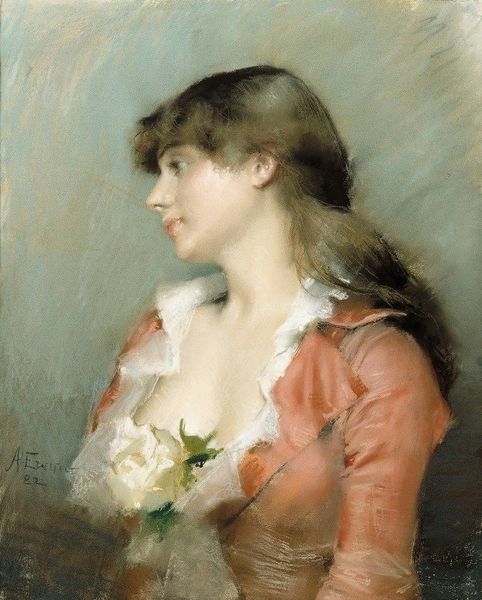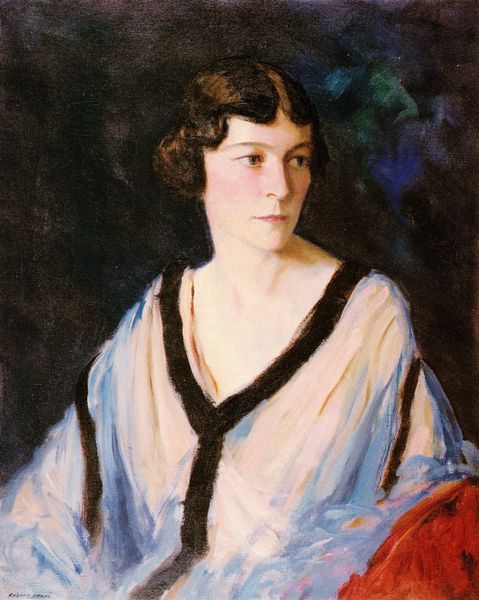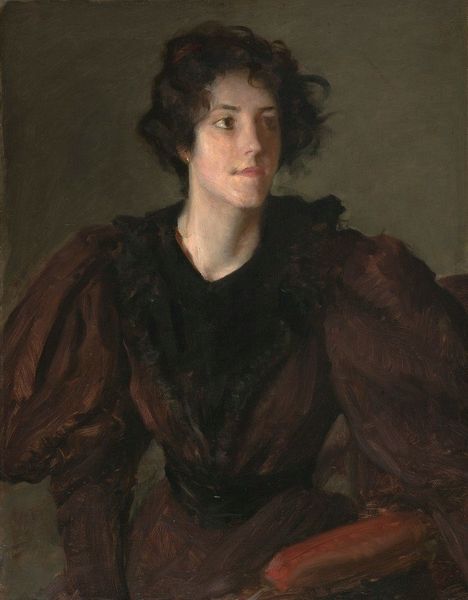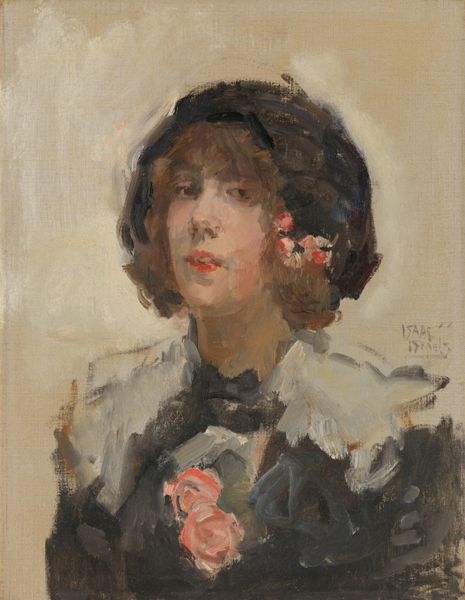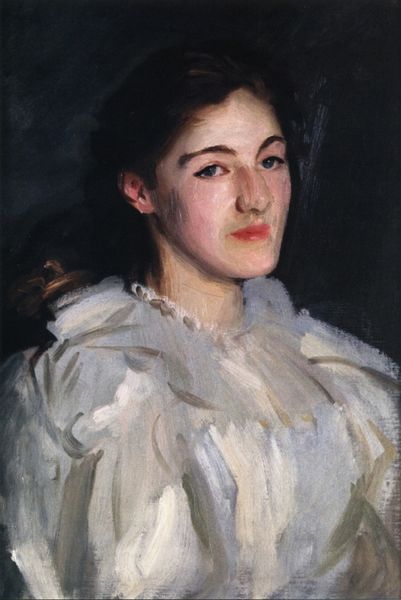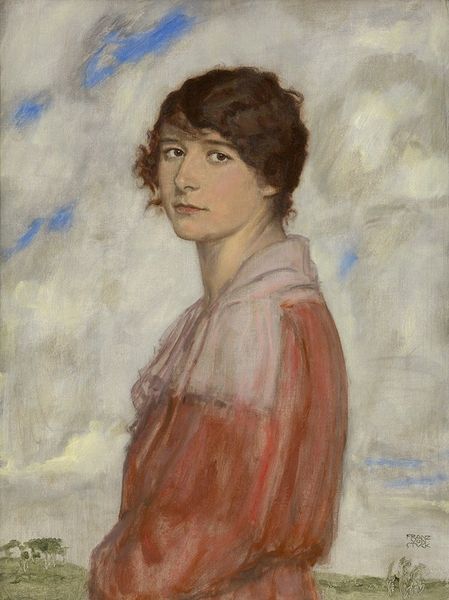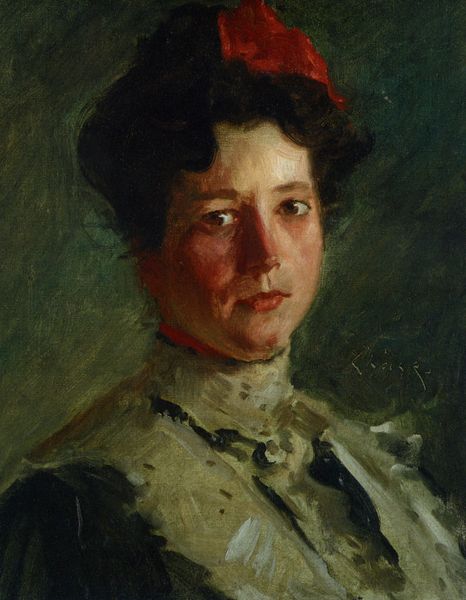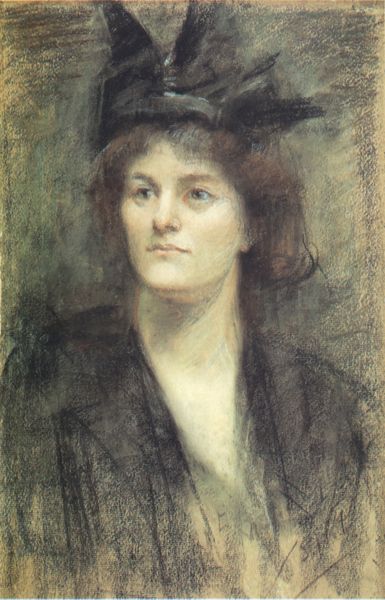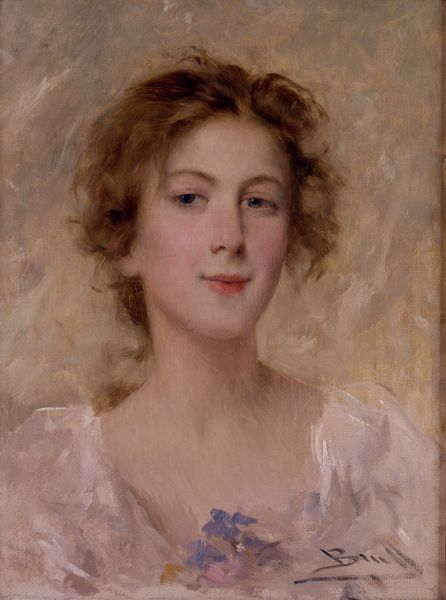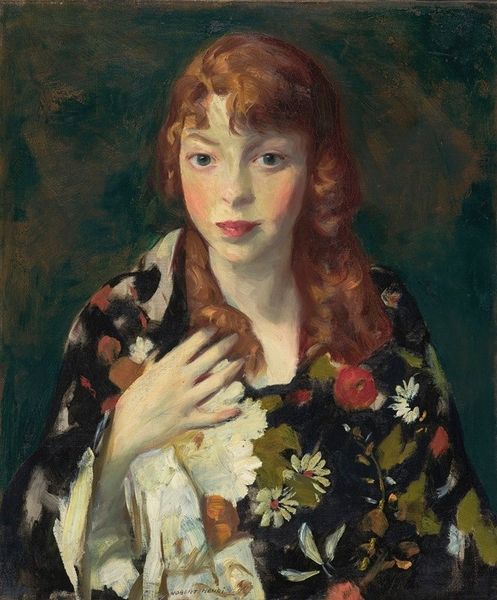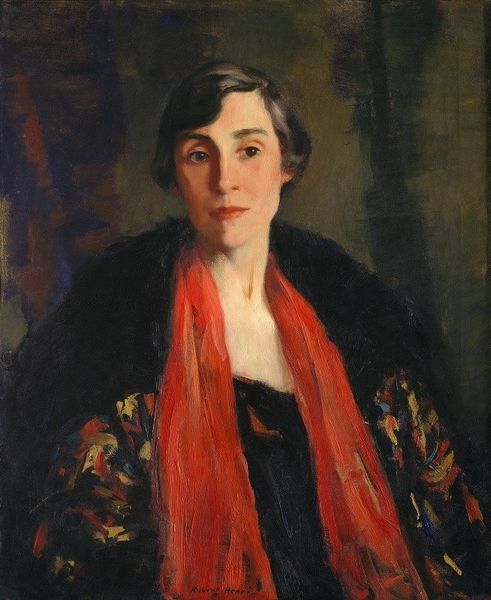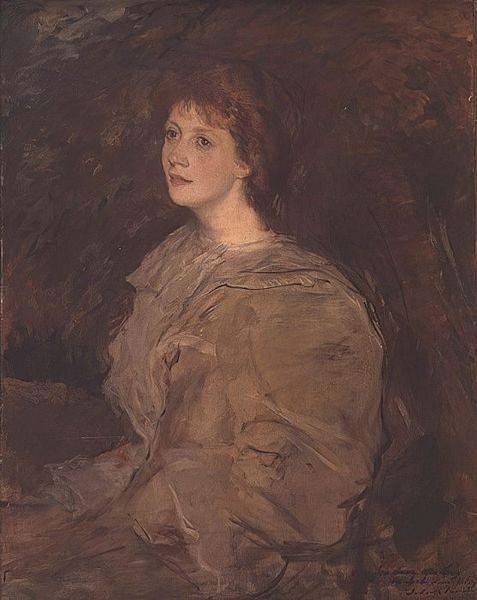
Copyright: Public Domain: Artvee
Curator: Robert Henri, a leading figure of the Ashcan School, painted this portrait, "Mildred Clarke von Kienbusch," in 1914. The oil on canvas gives us a glimpse into the aesthetic sensibilities of the time. Editor: I'm immediately struck by the rosy flush on her cheeks. She seems incredibly young and there’s a soft, almost melancholic aura around her. The composition feels both intimate and a bit distanced. Curator: Henri was deeply interested in capturing the spirit and vitality of modern life. His portraits often depicted individuals with a sense of immediacy, connecting to their subjects on a personal level. In this case, the setting appears somewhat formal. What are your thoughts on the presentation of women from that era? Editor: Right, the formal setting coupled with her almost tentative expression suggests a certain societal constraint. The bouquet she holds—it seems vibrant, yet constrained within the dark fabric of her coat, visually mirroring the limitations placed on women. It raises questions about gender roles and expectations during the early 20th century. I find that duality so interesting. Curator: Absolutely, and looking at the historical context, one has to consider the evolving role of women just prior to World War One and in the suffragette movement. It makes the choice of color palette more deliberate—dark background vs her flushed face and a dress opened to a bright white undershirt. The texture from the impressionistic strokes evokes depth. Editor: It's more than just aesthetics; the portrait becomes a space where personal identity clashes with social expectation. It feels incredibly relevant when viewed through intersectional gender studies, inviting us to contemplate representation, agency, and historical visibility. I keep circling back to her eyes—there's an almost imperceptible glimmer of defiance in them. Curator: Indeed. Considering Henri’s dedication to the vitality of individuals, "Mildred Clarke von Kienbusch" prompts viewers to look beyond the surface and delve into the subtleties of societal context and human expression. Editor: Precisely! It's these quiet rebellions that give such portraits enduring relevance. This single image triggers a layered analysis of historical norms, identities, and representational politics that echo powerfully today.
Comments
No comments
Be the first to comment and join the conversation on the ultimate creative platform.
